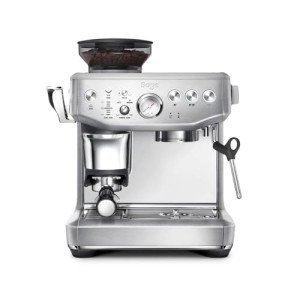Home Use Espresso Machines: A Comprehensive Guide
Espresso machines have become a staple in numerous homes as coffee enthusiasts look for to replicate café-quality brews in the comfort of their cooking areas. The rise in appeal has caused a varied market filled with various designs, functions, and costs. This article aims to supply a helpful summary of home use espresso machines, helping readers browse their alternatives effectively.
Understanding Espresso Machines
Espresso machines work by requiring hot water through finely-ground coffee under high pressure, resulting in a focused coffee drink called espresso. There are numerous types of espresso machines classified based on their brewing approaches and level of automation. The most typical types include:
- Manual Espresso Machines: These need the user to control the pressure and water flow, enabling a more hands-on coffee-making experience.
- Semi-Automatic Espresso Machines: These offer automatic control over water pressure, while the user by hand grinds and tamps the coffee.
- Automatic Espresso Machines: With the push of a button, these machines instantly control the flow of water, making it much easier to brew espresso with constant outcomes.
- Super-Automatic Espresso Machines: These all-in-one machines handle grinding, tampering, developing, and even milk frothing, making them perfect for users searching for benefit.
- Capsule or Pod Machines: These use pre-packaged coffee pods to create espresso with minimal effort, but they limit choice in brewing methods and tastes.
Table: Comparison of Espresso Machine Types
| Type | Control Level | Ease of Use | Cleaning up Level | Ideal For |
|---|---|---|---|---|
| Manual | User-controlled | Moderate | High | Coffee perfectionists |
| Semi-Automatic | Partial automation | Moderate | Moderate | Home baristas |
| Automatic | Completely automated | Easy | Low | Busy individuals |
| Super-Automatic | Fully automated | Extremely easy | Really low | Convenience hunters |
| Capsule/Pod | Totally automated | Very easy | Extremely low | Casual drinkers |
Key Features to Consider
When picking a home use espresso machine, it's necessary to think about various features that can significantly impact the quality of espresso and user experience.
- Pressure: Look for machines that supply at least 9 bars of pressure, as this is thought about optimal for brewing espresso.
- Boiler Systems: Single vs. dual boiler systems identify temperature stability and the ability to brew espresso and steam milk simultaneously.
- Grinder: Integrated grinders permit freshly ground coffee, which improves flavor. Consider machines with adjustable grind settings.
- Milk Frother: For those who delight in coffees and lattes, a built-in steam wand or automatic frother is essential.
- Size and Design: Consider your cooking area space and aesthetic choices. Machines are available in various sizes, from compact to big setups.
- Rate: Home espresso machines can range from a few hundred to numerous thousand dollars, so it's vital to establish a budget before exploring options.
Benefits and drawbacks of Home Use Espresso Machines
| Pros | Cons |
|---|---|
| Convenience of developing coffee in the house | Initial financial investment can be high |
| Quality of espresso is often exceptional | Needs some skill, especially with manual machines |
| Capability to try out flavors | Upkeep and cleansing can be labor-intensive |
| Can save cash in the long run | Not all machines will match every coffee choice |
Upkeep and Cleaning Tips
Keeping an espresso machine is vital for extending its life and making sure constant brew quality. Here are some beneficial pointers:
- Regular Descaling: Minerals from water can develop in the machine. Descale every 1-3 months, depending upon water hardness.
- Daily Cleaning: Rinse portafilters, baskets, and steam wands after each use to prevent coffee oils from constructing residue.
- Use Filtered Water: This can help in reducing mineral buildup and enhance the taste of coffee.
- Change Gaskets and Seals: These components might break in time and should be changed to preserve pressure and performance.
- Check out the Manual: Each machine has particular care guidelines; following these will make sure durability.
Frequently Asked Questions About Home Use Espresso Machines
Q1: What is the best budget espresso machine?The best budget espresso machine frequently depends on private requirements, but models like the DeLonghi EC155 or the Breville Bambino are popular amongst users for providing great worth. Q2: How long do home espresso machines usually last?With appropriate upkeep, home espresso machines can last anywhere from 5 to 15 years, depending on the quality of the machine and frequency of use. Q3: Can I make coffees and lattes with any espresso machine?While most espresso machines can make coffees and lattes, having a trusted
steam wand or frother is necessary for attaining the ideal milk texture.
Q4: Are super-automatic machines worth the investment?For those who prioritize benefit and fast brewing, super-automatic machines can be worth the financial investment, though they might do not have some customizability in brew strength and flavor. Q5: What types of coffee beans are best for espresso?While personal preference contributes, beans labeled as" espresso "blends are usually roasted darker, creating rich flavors and a velvety texture when brewed.
Buying a home espresso machine can transform the daily coffee routine into something special, elevating home brews to café quality. By comprehending the various kinds of machines, essential functions to consider, maintenance needs, and weighing the
advantages and disadvantages, customers can make educated choices that fit their private preferences. As my latest blog post continues to grow, no matter the option, every brew can be a scrumptious experience waiting to be relished.

